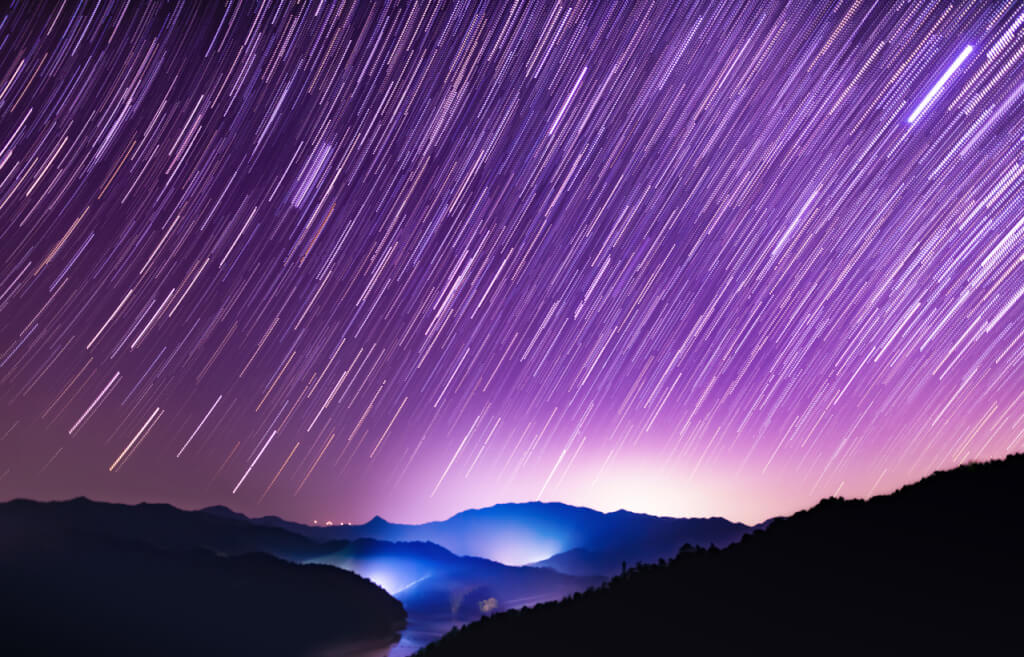Supermoon, eclipse and meteor showers: the best space events of 2023 not to be missed
Soon 2023. The new year will bring many exciting sky-watching opportunities, such as meteor showers, supermoons and - in some parts of the US - even an annular solar eclipse. What to expect from 2023 told the publication 9news.

Photo: IStock
January
Meteor shower Quadrantides
The first meteor shower of 2022 is the Quadrantids, which peak between Tuesday, January 3rd and Wednesday, January 4th. Although NASA claims that this meteor shower can produce up to 80 meteors per hour at its peak, there's a big problem: an almost full moon makes it difficult to spot meteors. The quadrantides also have a very short peak that lasts only a few hours.
April
Lyrid meteor shower
The Lyrids are a show of fast, bright meteors every year around Earth Day, and NASA claims they have been observed for over 2700 years.
This shower delivers about 18 meteors per hour at its peak, although it has been known to surprise observers with 100 meteors.
On the subject: Space technology in your home: 15 household items invented by NASA experts
Although the Lyrid meteor shower is not as abundant as the stunning Perseids in August, it has its own characteristics. Lyrid meteors are known for their spectacular luminous plumes of dust that can last for several seconds.
The Lyrid Peak will take place from 21 to 23 April 2023.
August
Perseid meteor shower
The Perseid meteor shower is often considered the best meteor shower of the year - it brings in 50 to 100 meteors per hour and is known for occasional very bright "fireballs". In addition, warm weather contributes to pleasant viewing.
There's a big bonus in 2023 that stargazers didn't have in 2022: no moonlight. The Perseid Peak falls on August 12, 2023.
"Supermoon"
Pretty cool name, right? Supermoons occur when a full moon coincides with the Moon's closest approach to the Earth. It's not an astrological term, but it's always popular to look at the night sky on these full moons.
NASA says supermoons can appear up to 17% larger and 30% brighter than the furthest and dimmest moon of the year.
"Although 17% doesn't make much of a difference in detectable size, a full supermoon is brighter than other moons throughout the year," explains NASA.
Supermoons happen three to four times a year, always in a row. The closest and brightest supermoon of the year will occur on August 31, 2023, and the full moons in July and September also qualify as supermoons.
October
Annular solar eclipse
This type of solar eclipse occurs when the moon is centered in front of the sun, covering everything but a circle of fiery light. NASA reports that on October 14, 2023, an annular eclipse will begin in the western United States and travel from the Oregon coast to the Gulf Coast before heading south.
Weather permitting, it can be seen over Oregon, Nevada, Utah, New Mexico and Texas, as well as parts of California, Idaho, Colorado and Arizona. More information, including eclipse path maps, is available on the NASA website. According to the space agency, 48 US states (except Alaska and Hawaii) will see at least a partial eclipse.
Orionid meteor shower
The Orionids will peak early on October 22, 2023, bringing 10 to 20 meteors per hour to observers. This shower is known for fast-moving meteors that leave luminous plumes that last a few seconds or longer.
"Fast meteors can also occasionally turn into fireballs: look for long bursts of light when observing the Orionid meteor shower," explains NASA.
November
Leonids
The Leonids will peak in the early morning hours of November 18, 2023. The moon will be less than a quarter full, so it's unlikely to outshine the view.
NASA reports that the Leonids produce about 15 bright, fast, and colorful meteors per hour. The stream is known for fireballs and "earth-eating meteors" that fly close to the horizon and have long multi-colored tails.
You may be interested in: top New York news, stories of our immigrants and helpful tips about life in the Big Apple - read it all on ForumDaily New York.
“Approximately every 33 years, viewers on Earth can encounter the Leonid storm, which can peak from hundreds to thousands of meteors per hour, depending on the observer’s location,” explains NASA’s website. The last time this happened was over 20 years ago, in 2002.
December
Heminides
The good news about another popular shower is that the Geminid peak on December 13 and 14, 2023 will be a pretty dim month. This meteor shower is considered one of the best meteor showers, bringing in over 100 meteors per hour.
One problem: December is a pretty cold month to walk around for hours watching meteors. However, many skywatchers still look forward to bright and fast meteors, which usually have a yellow tint.
Read also on ForumDaily:
How to protect yourself during snowfall and ice
A cure for old age: how scientists from around the world are trying to regain youth
Subscribe to ForumDaily on Google NewsDo you want more important and interesting news about life in the USA and immigration to America? — support us donate! Also subscribe to our page Facebook. Select the “Priority in display” option and read us first. Also, don't forget to subscribe to our РєР ° РЅР ° Р »РІ Telegram and Instagram- there is a lot of interesting things there. And join thousands of readers ForumDaily New York — there you will find a lot of interesting and positive information about life in the metropolis.












